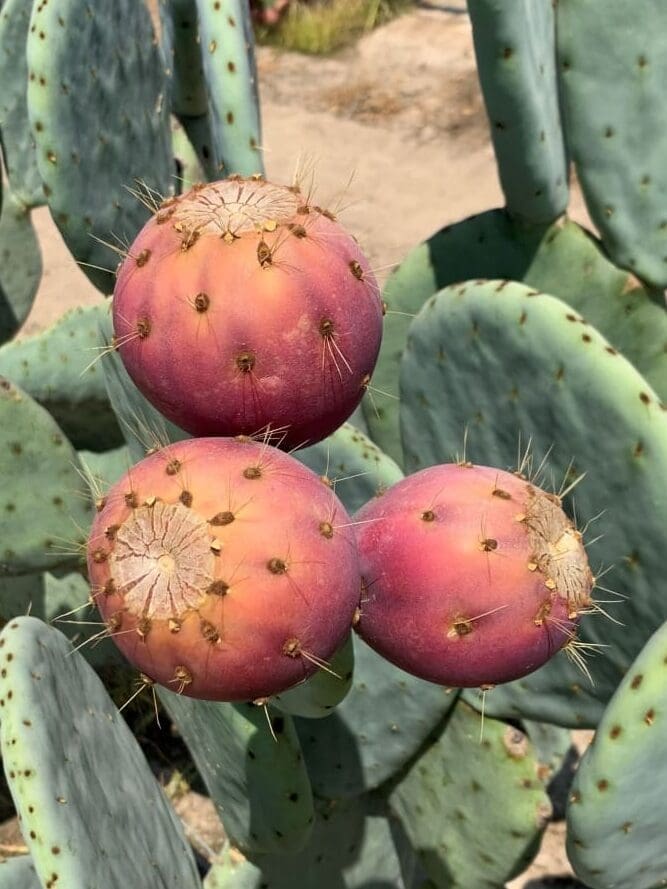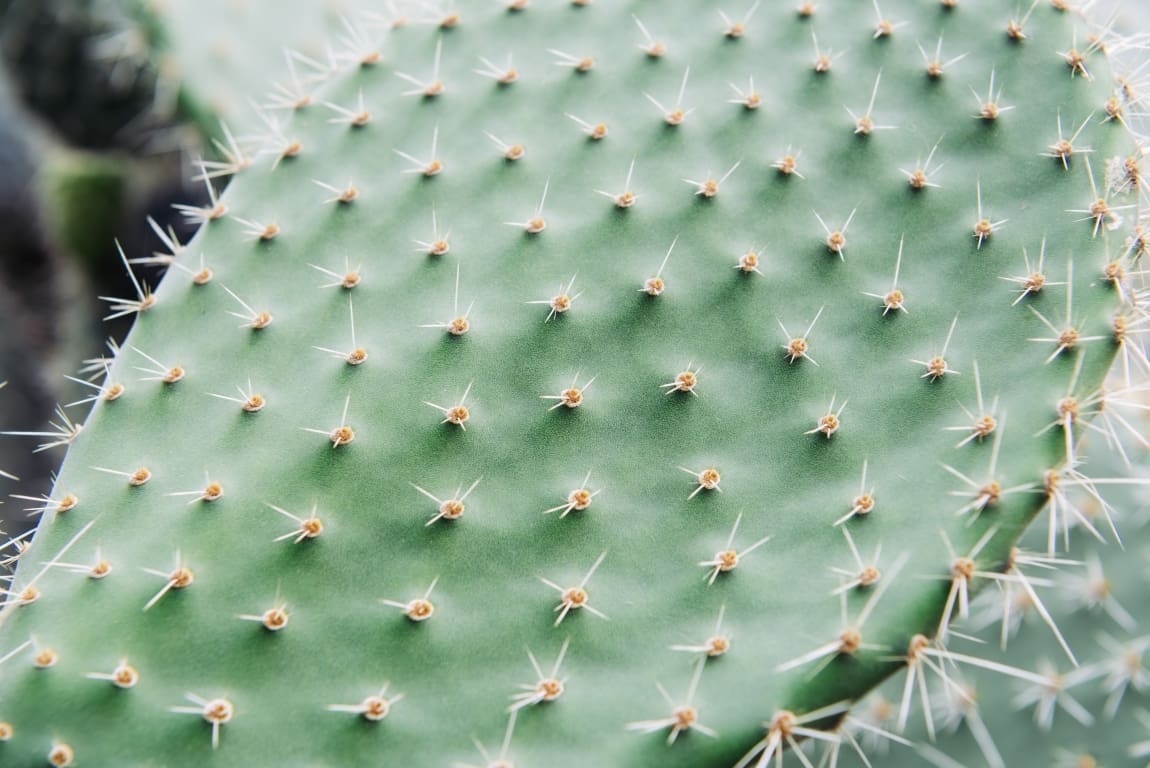By John Seelmeyer, University of Nevada, Reno
As much of the world prepares for hotter and drier growing seasons as the result of climate change, a research team led by University of Nevada, Reno researchers has identified several varieties of cactus pear that are particularly well-suited to producing biomass for fuels production.
The new findings build on earlier research led by John Cushman, a professor in the University’s Department of Biochemistry & Molecular Biology in the College of Agriculture, Biotechnology & Natural Resources. The earlier work identified the cactus pear as a climate-resilient, water-efficient and highly productive source of biomass for fuels production.
Now, research published in the Journal of Agronomy and Crop Science tracks the result of a three-year field trial of 14 varieties of cactus pear grown under semi-arid conditions at the National Arid Land Plant Genetics Resources Unit near Fresno, California. The test compared the amount of biomass produced by each of the 14 varieties.
Dramatic differences between varieties
Cushman, the primary investigator on the most recent research who also conducts research as part of the College’s Experiment Station unit, said the tests discovered surprising variation in biomass production among the varieties. The best-producing variety, in fact, performed eight times better than the poorest-producing variety. Researchers also found significant differences in the ease of vegetative propagation.
The variety that consistently produced the most biomass in the new test is a hybrid that is a cross between a species of wild prickly pear native to Texas and a spineless variety developed by Peter Felker at Texas A&M University for use by commercial growers.
That same hybrid produced the most cladodes, the elongated stems that are often mistakenly referred to as cactus leaves, and posted one of the best survival rates over the three-year trial. It also appears to be relatively easy to propagate, helping to reduce the labor costs of replacing plants that die.
Cushman said the outstanding performance of that hybrid variety might be improved even further as plant breeders work to create elite strains.
The 14 varieties of pear cactus in the recent study, including wild and hybrid strains from the United States, Mexico and Brazil, were selected from the nearly 292 possibilities that are grown in greenhouses at the Experiment Station’s Valley Road Field Lab in Reno or in field conditions at the trial site near Fresno.
Water-efficient source of biofuel
The research affirmed earlier findings that cactus pear is highly water-efficient, requiring much less water to produce the same amount of biomass produced by thirstier crops.
“This is a critical factor, as we know that the western United States has limited water supplies that are only becoming more limited with the current global climate crisis,” Cushman said. “So, we should be exploring more water-use efficient crops for our food, feed and bioenergy needs.”

Already, cactus pear is used as animal fodder, fuel and human food — notably, the nopalitos, or green pads of the cactus, that are a mainstay of Mexican cuisine. The fruit, or “tuna,” is also used to make syrups, candies and jellies. Now, Cushman said climate change is spurring even more interest in use of cactus pear as a crop in semi-arid and arid regions.
Known scientifically as Opuntia ficus-indica or Opuntia cochenillifera, cactus pear relies on an unusual type of photosynthesis called crassulacean acid metabolism to stay alive in hot, arid climates. The pores that allow the plant to take in carbon dioxide for photosynthesis close during the heat of the day to preserve moisture inside and then open during the cooler evening and nighttime hours.
Next: Studies of pests, optimal fertilizers
Dhurba Neupane, previously a post-doctoral researcher in the University’s Department of Biochemistry & Molecular Biology and the lead author of the recent paper, has been studying biofuels for more than 14 years. Neupane, who now works as a research agronomist at the North Central Agricultural Research Laboratory in Brookings, South Dakota, said previous studies found that cactus pear can be combined with wastes such as cow manure or slaughterhouse waste to produce climate-friendly biofuels.
But while the newest tests confirmed the potential of a hybrid form of pear cactus for efficient production of biomass, Neupane said researchers still want to learn more about a disease that can stunt the growth of the cactus, as well as the threat posed by the cochineal scale insect that feeds on pear cactus.
Cushman said the next steps for researchers will include tests of the best levels of fertilization to improve production while avoiding overfertilization and tests of planting density. Scientists want to learn more, too, about the adaptability of pear cactus across different growing regions of the American South and Southwest.
Cushman said researchers have described cactus pear as a “future food.”
“We need to explore more climate-resilient crops if we are to be able to provide for the future food, forage and fodder and biofuel needs of a growing human population,” he said. “Cactus pear is an extremely important and versatile crop that deserves greater attention.”
More Information: Dhurba Neupane, Nicholas A. Niechayev, Lisa M. Petrusa, Claire Heinitz, John C. Cushman, ‘Biomass production of 14 accessions of cactus pear (Opuntia spp.) under semi-arid land conditions’, Journal of Agronomy and Crop Science (2024); DOI: 10.1111/jac.12705. University of Nevada, Reno Press Release. Featured image credit: alexphotos | Freepik




